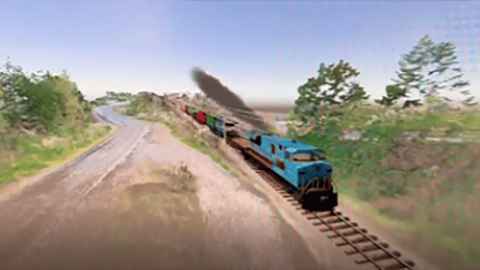Halcombe, we have a digital twin
07 August 2023
The digital twins approach pioneered by NASA is now making an autonomous shuttle between Marton and Feilding possible for Ngā Iwi o Te Reureu.

On Tuesday 14 April 1970, astronauts on the spacecraft Apollo 13 let Houston know they had a problem.
An oxygen tank had exploded, and there was damage to the main engine. With the clock ticking, NASA employed multiple simulators to see what had caused the failure. Back on Earth, the astronauts had trained for their mission in a physical model of the spacecraft they were now in. NASA extended this model to include digital components, which meant they could import and analyse data from space to see what had caused the explosion, and explore scenarios that could get the crew safely back home.
This was the first digital twin. A digital twin is a virtual representation of a product, system or process, and they are now commonplace. Digital twins allow manufacturers to optimise their production processes, hospitals to complete more surgeries, and commuters to find the best way home during rush hour.
Half a century later, in Aotearoa New Zealand, the digital twins approach pioneered by NASA is now making an autonomous shuttle between Marton and Feilding possible for Ngā Iwi o Te Reureu.
Graeme Everton, the project manager for Māori economic development agency Reureu Kotahitanga Ltd, wants to improve connectivity for Ngā Iwi o Te Reureu. Graeme approached Atawhai Tibble about using digital twins to develop and validate his plan for an autonomous shuttle running on rail tracks between Marton and Feilding. Atawhai is on the advisory board for Te Pūnaha Matatini, the Aotearoa New Zealand Centre of Research Excellence for complex systems hosted by the University of Auckland.
Graeme can use this digital twin to support the business case for the real-world infrastructure necessary to have an autonomous rail service running between Marton and Feilding by 2027.
Associate Professor Mike O’Sullivan is deputy director of Te Pūnaha Matatini and an associate professor in Engineering at the University of Auckland. Mike has worked with digital twins in healthcare. He brought his Engineering colleague Dr Yang Zou on board to use light detection and ranging (LiDAR) to scan the rail track and convert it into a 3D model. In partnership with Ryan Curry from KiwiRail and Gordon Lyall from iLinks, Graeme and Yang have now successfully captured the first six kilometres of rail track between Te Reureu Valley and Halcombe.
The next step is to add a realistic model of an autonomous rail shuttle to the digital twin and implement a control system for how the shuttle would operate in practice. Once the digital twin of the track between Te Reureu and Halcombe has been validated and de-risked, a second capture will be done between Marton and Feilding.
This combined data will provide a digital twin to test and showcase a fully autonomous rail service on the network. Graeme can use this digital twin to support the business case for the real-world infrastructure necessary to have an autonomous rail service running between Marton and Feilding by 2027.
The approach pioneered by Graeme, Yang and the rest of the team can also be extended across Aotearoa New Zealand’s entire rail system to provide a digital twin for evaluation, management and innovation into the future.
This work was funded and supported by Waka Kotahi through the Hoe ki angitū – Innovation Fund.